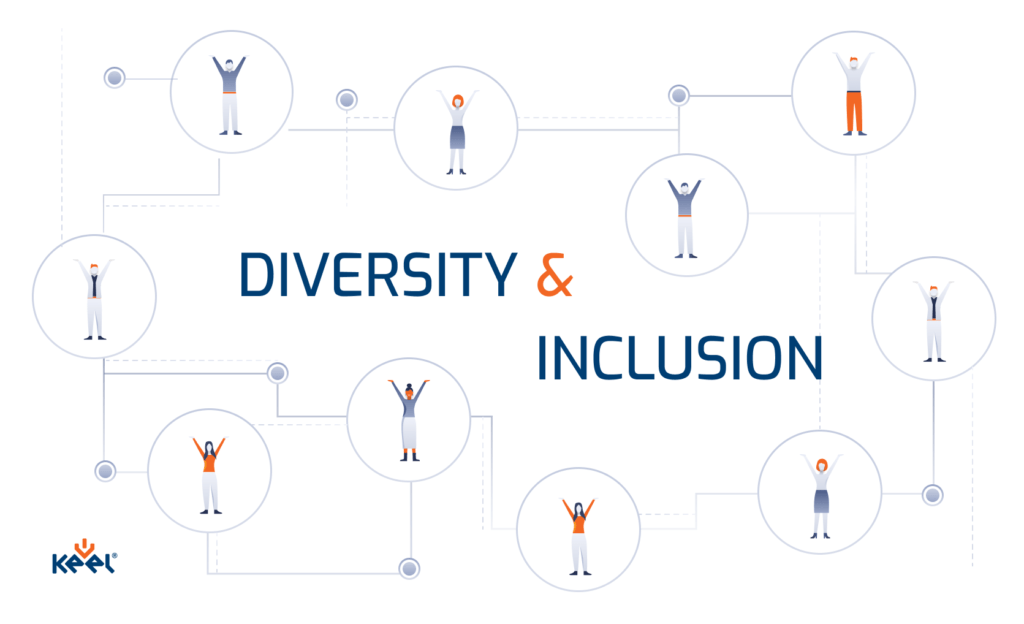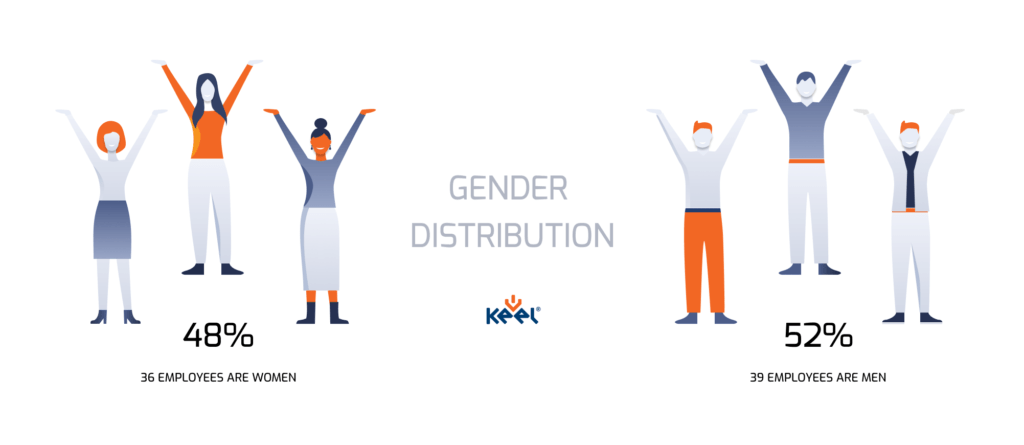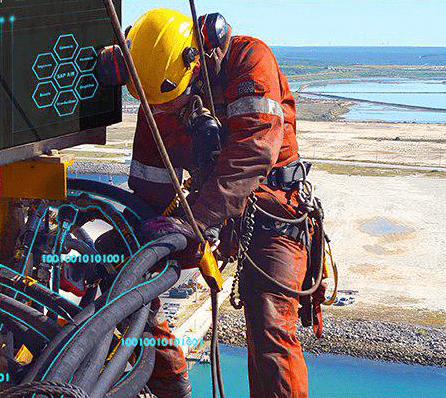International Women’s Day in the Wind Energy Industry
9 March, 2020
“In a rapidly changing world, the more companies look like the societies they intend to serve, the better their choices and decision-making”
Isabelle Kocher, CEO of Engie
March 8th is International Women’s Day, celebrating the social, economic, cultural and political achievements of women. The holiday was ideated at the first International Socialist Women’s Conference in Copenhagen, Denmark, on August 10, 1910. A year later, on March 19, 1911, International Women’s Day was officially celebrated by over a million people in Austria, Denmark, Germany and Switzerland.
On International Women’s Day, women around the world come together to celebrate the contributions and achievements of women in society and fight for women’s rights and gender parity, which is the statistical study of women compared to men in areas that designate equality or inequality, such as income, education, work hours, remuneration and representation in the labor force. The theme for International Women’s Day in 2020 is #EachforEqual.
When it comes to the wind energy industry, there’s some work to do around gender equality. According to IRENA, the International Renewable Energy Agency,

Why representation of women in the wind energy industry matters
As a society, we have an enormous job ahead of us. Rising sea levels, new highs in greenhouse gasses, more acidic ocean waters, and increased hydro-meteorological natural disasters all point to the urgency of addressing climate change. A new global energy system is needed, one that calls for a dramatic reduction in reliance on fossil fuels and dramatic investment in renewable energies to replace it.
Global employment in the renewable energy sector grew by nearly 4 million jobs in six years – from 7.1 million in 2012 to 11 million in 2018 (IRENA), and the size of the wind energy market globally is forecasted to reach 160 billion USD by 2024, more than double the size of the wind energy industry in 2016. Skilled workers are incredibly important to supporting this growth. It will take the combined might of all the brightest minds we have to manage the large-scale deployment of renewable energy necessary to support a sustainable future at a global level.
Unfortunately, despite the rapid growth of the industry, women remain overwhelmingly underrepresented in wind energy. This is a shame for reasons beyond a skilled labor source going untapped in a rapidly expanding market. Research studies by Unesco shows that gender imbalances adversely affect economic growth and social progress. Diversity leads to a wider range of ideas and opinions, which is important for instigating change and laying the necessary foundation for technological innovations, scientific discoveries, and social progress. This includes advancements in the efficacy and reliability of wind power. In addition, according to a study by Peterson Institute for International Economics, women have a positive impact on profits when represented in the executive suite.
Barriers facing women in wind energy
Part of the reason for low representation of women in the renewable energy industry is because fewer women in the candidate pool have a qualified STEM education or background. According to research from the World Economic Forum, only a small fraction of female students select STEM-related fields in higher education. The gender balance is better in some regions of the world than others, but when looking at students enrolled in STEM courses from a global perspective, only 3 percent of students enrolled in information and communication technology (ICT) courses are women, 5 percent of students enrolled in mathematics and statistics courses are women, and 8 percent of students enrolled in engineering, manufacturing and construction courses are women.
These low figures are largely the result of entrenched gender stereotypes that persuade women — starting from childhood and reinforced throughout their lifetimes — that they are less capable than men when it comes to analytical thinking, mathematics, technology and mechanics. Women are also more likely to face discrimination or barriers to advancement in STEM careers, especially if they have or want children.
In January 2020, IRENA released new research on the presence of women throughout the wind energy value stream. A survey was conducted jointly with the Global Wind Energy Council (GWEC) and the Global Women’s Network for the Energy Transition (GWNET) and compiles findings based on responses from over a thousand individuals and organizations on questions related to female representation, gender-inclusive policies, and perceptions of gender bias across the wind energy industry.
Here are some highlights from the brief:
- More than half (53 percent) of respondents stated that there are barriers to women’s entry, retention, and advancement in the wind energy industry.
- Men tend to see fewer gender-related barriers than women (34 percent of men compared to 65 percent of women).
- Perception of gender roles or cultural and social norms was the top reason given for why women encounter barriers.
- A lack of fairness and transparency regarding internal policies and processes was identified as the most relevant concern for retaining women in the workforce.
- Although no actual pay data was studied, 40 percent of respondents believed that men are paid more in the wind energy sector for equal work, which is lower than the perception respondents had of the gender pay gap in the overall economy (68 percent).
- 73 percent of respondents cited networking and 65 percent cited mentoring as measures needed to support women in the wind energy industry.
The IRENA new research brief is called Wind Energy: A Gender Perspective and includes best practices based on interviews and recommendations from participants for building a more inclusive workplace for women and promoting the visibility and achievements of female leadership. You can download the complete report here.
How to grow the representation of women in wind energy
Barriers to women in the wind energy sector can only be addressed by an industry-wide conscious effort to provide women with equal opportunity for entry and advancement. Increased transparency with an emphasis on equity and fairness in recruitment, compensation, and promotion processes will go a long way in adjusting perceptions and encouraging women to take a chance on a career in such a male-dominated industry.
In addition, women will benefit from increased promotion and celebration of the achievements of women currently in the wind energy, especially women in technical, managerial, or policy-making roles traditionally held by men. It is important to establish role models and demonstrate pathways to advancement to inspire incoming generations and show what a career in wind energy has to offer women.
Finally, companies may want to experiment with benefits and policies that make the workplace culture friendlier to women. This might include offering training or upskilling programs and ensuring that women are encouraged to apply. It might include conducting a pay equity or employee engagement analysis or surveying other aspects of job satisfaction. Some organizations may want to experiment with benefits that better support women with children, such as flexible hours, paid parental leave, or resources for childcare. Finally, organizations may need to take active steps to improve the workplace culture and combat gender stereotyping, including assumptions that women are only rarely capable of highly technical occupations like engineering or that all women will necessarily have children or that having children means women are less valuable, capable or committed to their careers.
International Women’s Day is an important day to focus on both the progress we have made and the gaps in gender equality we have yet to close. Ideally, organizations in the wind industry will take the opportunity to both recognize the achievements of women in the workplace and take action to attain gender parity where it currently falls short. Over time, the conscious effort will improve the gender balance. In turn, we will all benefit from the skills, expertise and creativity that women bring to the workforce and the impact utilizing all the best and brightest will have in creating a more sustainable future.
We are ready to help!
Request consultation, ask a question or share your feedback. Just get in touch!







